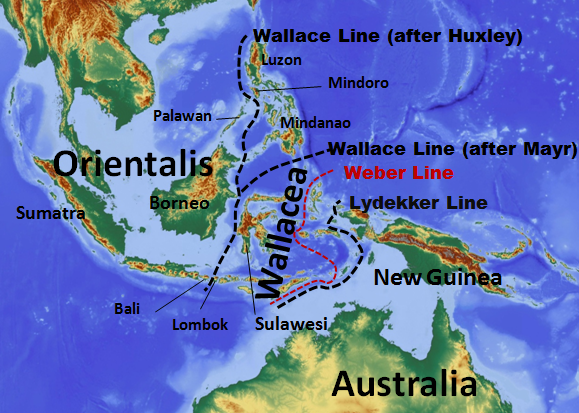
Credit: Altaileopard, CC BY-SA 3.0, via Wikimedia Commons
Background
Synopsis: The Wallace Line, a boundary separating the unique species of Australia from those of Southeast Asia, has long fascinated scientists. Exploring the influence of plate tectonics, glacial periods, and geographic isolation may hold the answer to this mystery.
- Britain’s Alfred Russel Wallace (1823 - 1913) was a naturalist, explorer, geographer, and anthropologist who is credited with independently proposing the concept of evolution and natural selection with his work being published alongside papers by Charles Darwin. But Wallace’s observations on species distribution across the Malay Archipelago, located off the northwest coast of Australia, are likely why many recognize his name today.
- While traveling and exploring the islands of the Malay Archipelago, Wallace encountered very different types of species in Bali and Lombok, two islands separated by a narrow strait that is 12 miles (20 km) wide at its narrowest.
- Bali was home to species like those in mainland Asia such as elephants, large cats, and rhinoceros. Yet none of these are found on the neighboring island of Lombok which is just to the east and closer to Australia.
- Wallace hypothesized that the species separation was due to geographical barriers, specifically, the deep ocean trenches that isolated the islands on either side of the Lombok Strait. Giving evidence to his evolutionary beliefs, he speculated that species on each side evolved in isolation, leading to the distinct flora and fauna we observe today.
- This biogeographic boundary, now known as the Wallace Line, helped lay the foundation for modern evolutionary biology and biogeography. This invisible line has fascinated scientists for over a century, as it represents one of the most striking patterns in biogeography.
- On one side, we find the marsupials and monotremes typical of Australia and New Guinea. Monotremes are the only living mammals that lay eggs and include the platypus that was featured in ED 207 A Really Odd Mammal.
- On the other side of the line are mammals that reproduce with live births, birds, and reptiles more typical of Asia. These include mammals such as tigers, elephants and rhinoceros.
- What has long intrigued researchers is understanding why this boundary, despite the relatively short distance involved, has led to such distinct faunal communities.
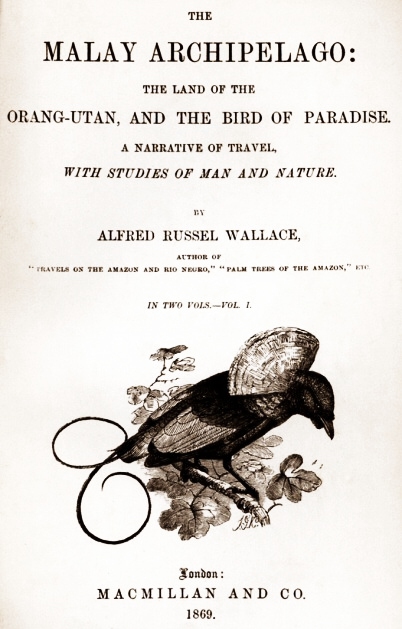
Wallace’s most successful book, The Malay Archipelago, chronicles his exploration of the region from 1854 to 1862. In the book, he describes not only the plants and animals of the region but also the geology and volcanoes, the people he met, and the hardships encountered during his 14,000-mile journey. During the trip, he collected over 125,000 specimens, including insects, mollusks, birds, reptiles, and mammals.
Credit: Alfred Russel Wallace, public domain, via Wikimedia Commons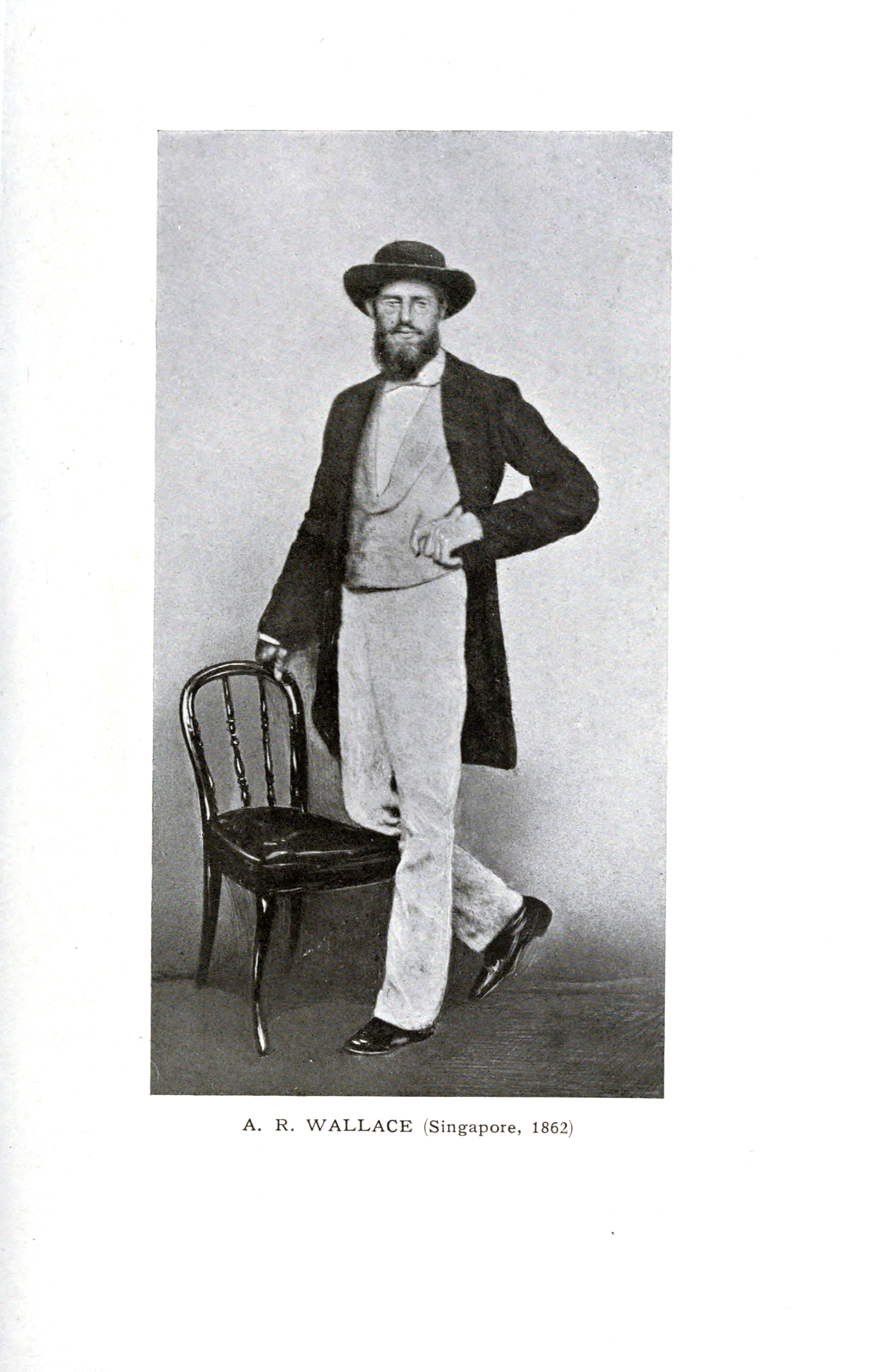
This photo shows Alfred Wallace near the end of his voyage to the Malay Archipelago. The pictures notes that it was taken in Singapore in 1862.
Credit: James Marchant, public domain, via Wikimedia Commons
- Wallace proposed that the sharp divide in species distribution between Bali and Lombok could only be explained by “vast changes to the surface of the Earth.” Today, scientists recognize that this biogeographical boundary was shaped by a combination of plate tectonics, sea-level fluctuations, and climatic factors over millions of years.
- During the Pleistocene glacial periods, global sea levels dropped significantly—sometimes by more than 100 meters—exposing vast areas of the continental shelves.
- Research confirms that full land bridges existed between Bali and Lombok via Nusa Penida, providing a temporary connection between the Asian and Australian faunal regions.
- These bridges formed during glacial maxima and were submerged again during interglacial warming phases when sea levels rose.
- Even when land bridges were present, the Lombok Strait was shaped by strong ocean currents known as the Indonesian Throughflow (ITF). These warm Pacific waters flow southward into the Indian Ocean, creating high-energy currents that have eroded coastlines and reshaped the seabed.
- This erosion, combined with tectonic subsidence, contributed to the eventual loss of land connections, reinforcing the separation of species across Wallace’s Line.
- Furthermore, the Indo-Australian and Eurasian plates interact in this region, creating complex geological activity.
- The Lombok Strait Fault is a strike-slip fault, where horizontal movements between tectonic plates have contributed to shifts in land elevation.
- Over time, tectonic activity caused both subsidence and uplift, influencing the formation and disappearance of land bridges.
- This faulting, combined with regional volcanism, has played a key role in shaping the deep trench of the Lombok Strait, creating a lasting barrier between the faunas of Asia and Australia.
- While geological forces dictated whether land connections existed, climate played a role in determining which species could successfully migrate. Research suggests that precipitation and humidity levels influenced dispersal patterns, particularly for vertebrates.
- Many species from Sundaland (Southeast Asia) evolved in humid rainforest environments, which were similar to the tropical conditions in Wallacea, allowing for easier colonization.
- In contrast, many Sahulian (Australian) species evolved in drier conditions and struggled to adapt to the humid environments beyond their original range, limiting their movement into Asia.
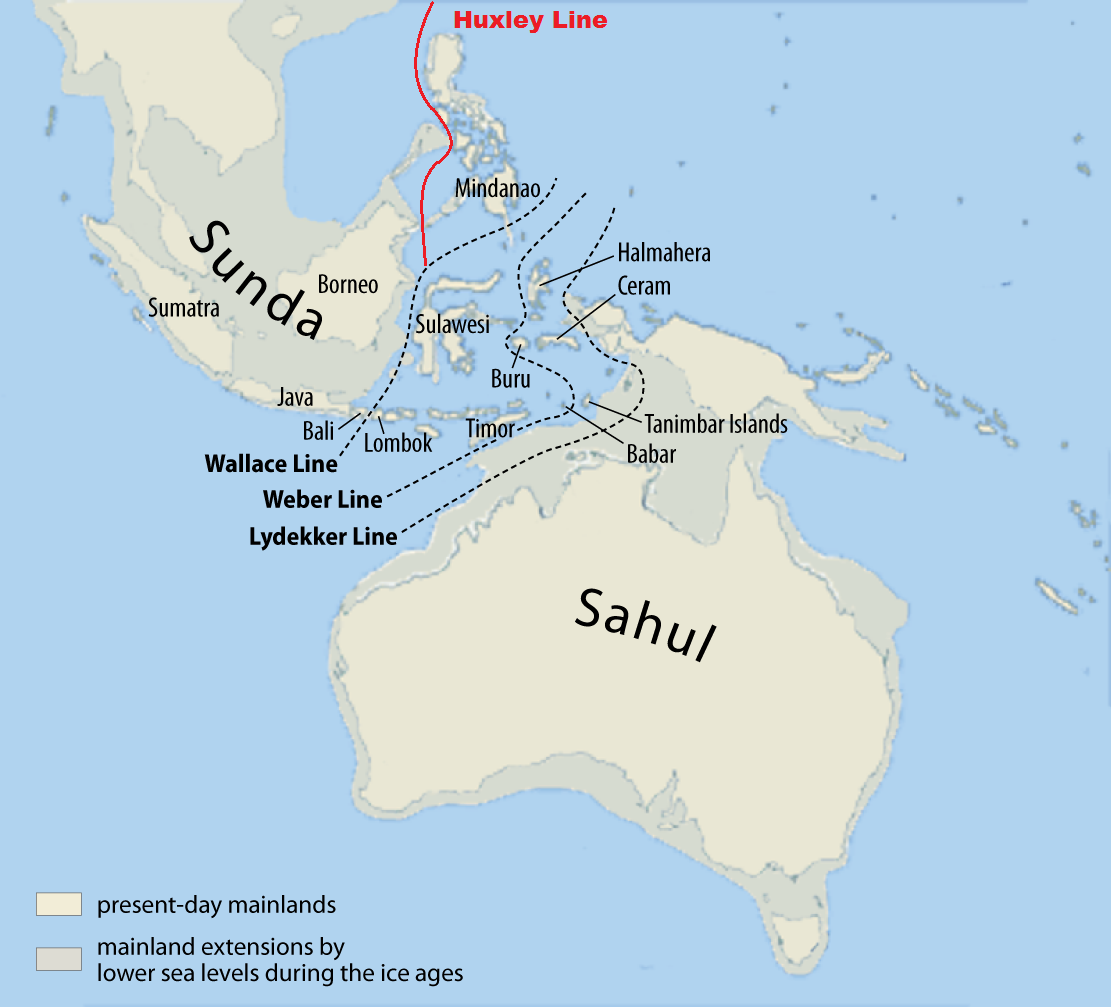
The Wallace Line is located in the Wallacea Islands between the Sunda and Sahul continental plates.
Credit: Altaileopard, CC BY-SA 3.0, Creative Commons,via Wikimedia Commons
Marsupials are found on the eastward side of the Wallace Line and included (Clockwise from upper left) female koala (Phascolarctos cinereus) at Billabong Koala and Aussie Wildlife Park, Port Macquarie, New South Wales, Australia; mahogany glider (Petaurus gracilis); young eastern grey kangaroo (Macropus giganteus) at Lone Pine Koala Sanctuary, Brisbane, Australia; Sulawesi bear cuscus (Ailurops ursinus) at Grand Naemundung Animal Collection, Tandurusa, North Sulawesi, Indonesia
Credit: Author unknown via Wikimedia Commons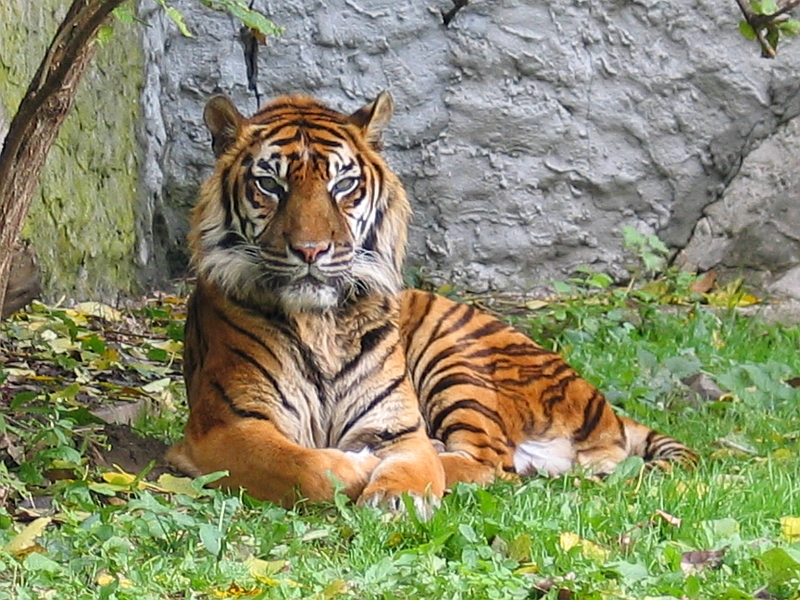
Large cats like this Sumatran tiger (Panthera tigris) do not exist in Australia.
Credit: Monka Betley, CC BY-SA 3.0, via Wikimedia Commons -
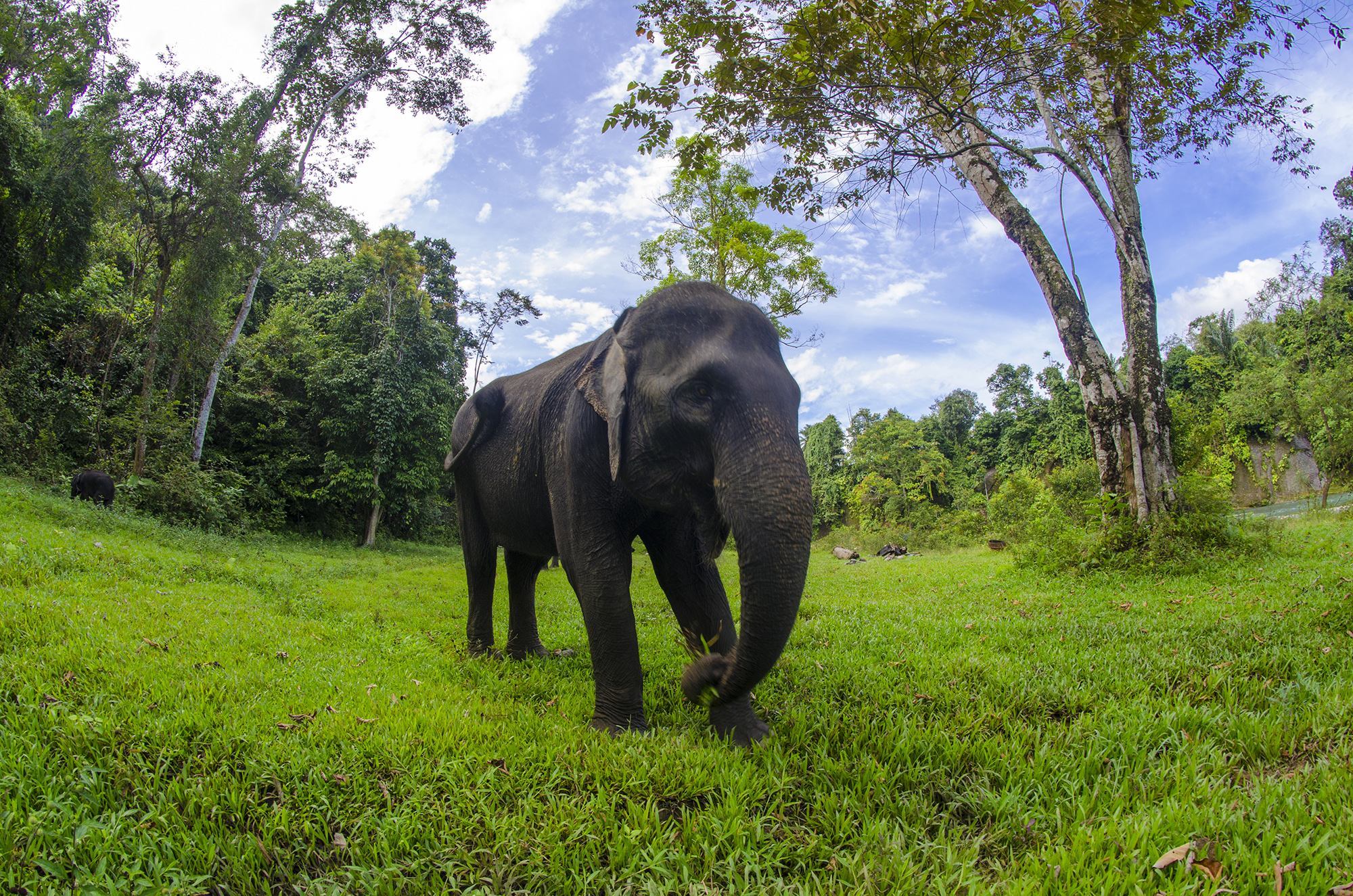
This Sumatran elephant makes its home in the Tangkahan Cconservation Aarea, Gunung Leuser National Park, Langkat
Credit: kusuma wijaya, CC BY-SA 4.0, via Wikimedia Commons
- During the Pleistocene glacial periods, global sea levels dropped significantly—sometimes by more than 100 meters—exposing vast areas of the continental shelves.
- Wallace’s Line is not a static boundary—it has shifted over time due to the interplay of geological transformations and climate change. As sea levels fluctuated, land bridges appeared and disappeared, offering brief windows for species migration. At the same time, adaptations to past environmental conditions influenced the direction of faunal exchange, reinforcing the stark contrast between the biodiversity of Asia and Australia that persists today.
- This ongoing interplay between geography, climate, and biology continues to shape the modern world, influencing the distribution of species both past and present. As researchers continue to uncover the complex factors behind species dispersal, the Wallace Line serves as a vivid reminder of how delicate the balance between environment and life can be.
Episode Script
In the mid-1800s, the great naturalist Alfred Russell Wallace, exploring what is now Indonesia, came upon a mystery.
The islands of Bali and Lombok are separated by a narrow strait, just 12 miles across at its closest point.
On Bali, there are elephants, rhinos and tigers—animals found across Southeast Asia. On Lombok, there are marsupials and monotremes as found in Australia and New Guinea.
Even the birds are different, with woodland Asiatic birds on Bali, and parrots and jungle birds on Lombok.
Why are the animals so completely different, across so small a distance?
Wallace theorized that the very deep water of the Lombok Strait somehow formed a dividing line the animals couldn’t cross.
Geologists backed him up, noting that during the past several Ice Ages, sea levels would have fallen, and the islands from Bali to mainland Asia would have been connected by land bridges, allowing animals to migrate across.
Lombok would have remained separated by the deep trench, and isolated from Bali’s animals—allowing Australasian species to colonize it.
New research suggests, however, that there may have been a land bridge between the two islands after all. And that differing humidity levels on the islands may influence which species can thrive on them.
These findings may reopen the mystery of ‘the Wallace Line,’ that divides the animal populations of Indonesia—one for future great naturalist to solve.

